National Healthcare Quality and Disparities Report
Latest available findings on quality of and access to health care
Data & Analytics
- Data Infographics
- Data Visualizations
- Data Tools
- Data Innovations
- All-Payer Claims Database
- Consumer Assessment of Healthcare Providers and Systems (CAHPS®) Program
- Healthcare Cost and Utilization Project (HCUP)
- Medical Expenditure Panel Survey (MEPS)
- National Healthcare Quality and Disparities Report Data Tools
- Network of Patient Safety Databases
- AHRQ Quality Indicator Tools for Data Analytics
- Surveys on Patient Safety Culture
- United States Health Information Knowledgebase (USHIK)
- Data Sources Available from AHRQ
Data Resources
Filter by Topic
- Access to Care (4)
- Adverse Events (1)
- Ambulatory (2)
- By Payer (2)
- By State (3)
- Children (3)
- Children (1)
- Children/Adolescents (1)
- Clinicians (1)
- Community Pharmacies (1)
- Costs (2)
- Costs & Charges (1)
- Coverage (4)
- Data (3)
- Discharges by State (1)
- Disparities (2)
- Elderly (1)
- Element Definitions, Values & Information Models (1)
- Emergency Departments (4)
- Employer (1)
- Estimates (State & Metro) (1)
- Expenditures & Projections (3)
- (-) Health (5)
- Health Care (8)
- Health Conditions (5)
- Health Plans (3)
- Health Systems (1)
- Hospital Characteristics (2)
- (-) Hospitalizations (10)
- Household Spending (1)
- Injuries Seen (1)
- Inpatient Care (1)
- Insurance (9)
- Medicaid (1)
- Medicare (1)
- Men (1)
- Mental Health (3)
- Mental Health and Substance Abuse Disorders (2)
- Obesity (1)
- Opioids (1)
- Patient Experience (1)
- Payment Sources (1)
- Premiums (1)
- Prescription Drugs (1)
- Preventable (1)
- Private (1)
- Quality (3)
- Readmissions (2)
- Safety Culture (1)
- SCHIP (1)
- Spending (2)
- State (1)
- Surgery (3)
- Systematic Review (1)
- Systems - Characteristics (1)
- Uninsured (2)
- Use (3)
- Visits (2)
- Women (2)
Data Resources
The Agency for Healthcare Research and Quality (AHRQ) offers practical, research-based tools and other resources to help a variety of health care organizations, providers and others make care safer in all health care settings.
Results
1-10 of 15 Resources displayed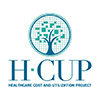
These HCUP Statistical Briefs provide general statistics about the cost of hospital stays in the United States, including the most costly conditions (diagnoses) and procedures.
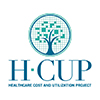
These HCUP Statistical Briefs provide general statistics about hospital stays in the United States, including an overview of the most frequent conditions (diagnoses) seen and the most frequent procedures performed in hospitals.
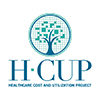
These HCUP Statistical Briefs provide statistics about potentially preventable or avoidable hospitalizations in U.S. hospitals.
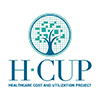
These HCUP Statistical Briefs provide statistics about readmissions to U.S. hospitals, including readmissions involving specific conditions (diagnoses) and procedures.
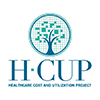
These HCUP Statistical Briefs provide statistics about hospitalizations for conditions unique to women, specifically pregnancy and childbirth.
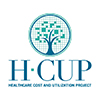
HCUPnet is a free, on-line query system based on data from HCUP. The system provides health care statistics and information for hospital inpatient, emergency department, and ambulatory settings, as well as population-based health care data on counties.
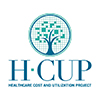
The Kids' Inpatient Database (KID) is the only all-payer pediatric inpatient care database in the United States, containing data from two to three million hospital stays. Its large sample size is ideal for developing national and regional estimates and enables analyses of rare conditions, such as congenital anomalies, as well as uncommon treatments, such as organ transplantation.

Children can be identified by the age variables in the MEPS-Household Component, allowing most MEPS analyses to be performed for children.

The elderly can be identified in MEPS-Household Component. Their expenditures, prescription drug usage, and utilization can be analyzed. In addition to the tables and publications below, data files can be downloaded for further analyses.

The MEPS-Household Component collects some questions specific to men related to preventive care.



